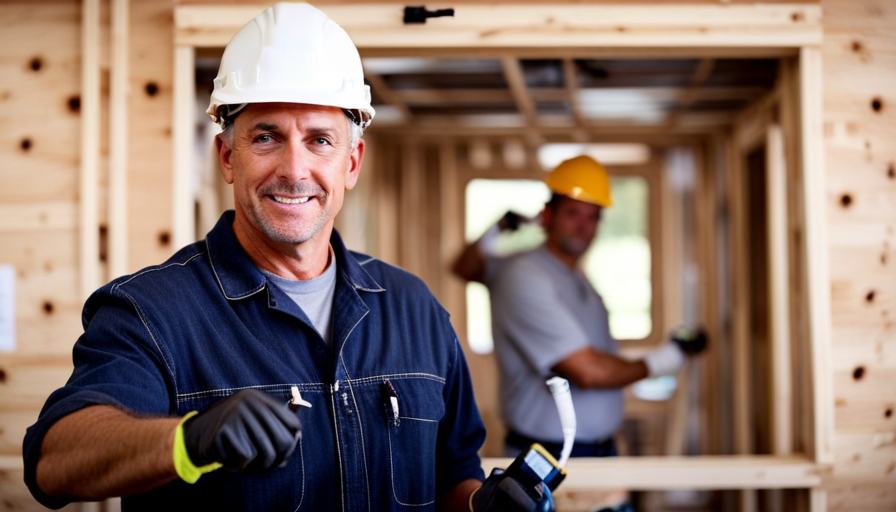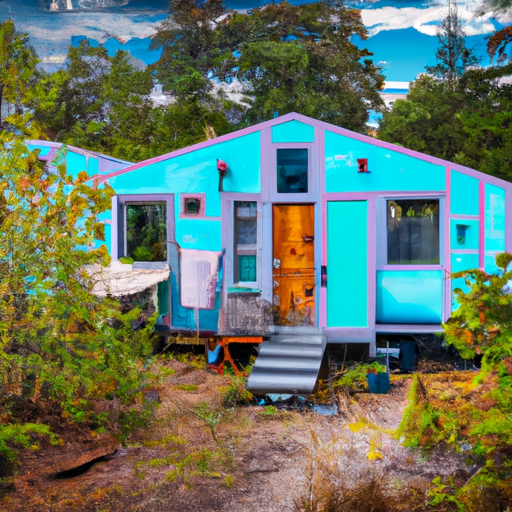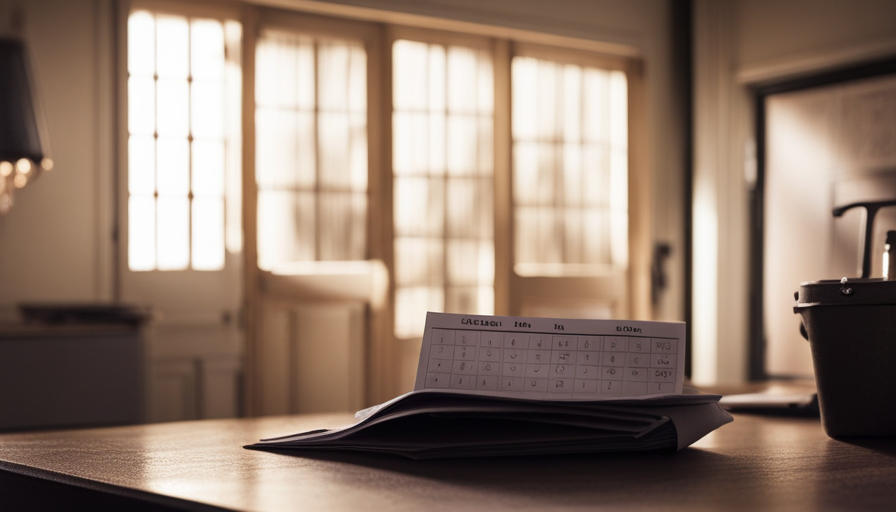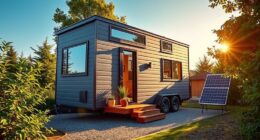Creating a tiny home is akin to setting off on a significant journey, where each choice and detail has importance. The arrangement and style, along with the materials selected, all mirror your individual taste and aspirations. As for the electrical setup, it’s easy to fall into the trap of believing it’s something you can manage on your own. It is just a tiny house, after all, isn’t it?
But before you pick up that wire stripper, consider the importance of safety and compliance with electrical codes. Imagine the peace of mind that comes from knowing your electrical system is professionally installed and meets all necessary safety standards. Hiring an electrician for your tiny house build ensures that your electrical system is designed correctly, components are installed and wired properly, and any issues are addressed promptly. Plus, obtaining permits and passing inspections becomes a breeze when you have an expert guiding you through the process.
So, while building a tiny house is a thrilling adventure, don’t overlook the importance of hiring an electrician to ensure a safe and sound electrical system.
Key Takeaways
- Hiring an electrician is crucial for ensuring safety and compliance with electrical codes when building a tiny house.
- Electricians have the knowledge and expertise to design and install a proper electrical system based on the size and power needs of the tiny house.
- Troubleshooting electrical issues is best left to professionals, as they understand circuits and common problems.
- Hiring an electrician provides peace of mind, guarantees safety, and saves time and effort in dealing with electrical issues.
Understanding Electrical Codes and Safety Standards
Although building a tiny house may seem like a DIY project, it’s imperative to hire an electrician to ensure compliance with electrical codes and safety standards.
Electrical code requirements are in place to protect homeowners from potential hazards, such as electrical fires or shocks. An electrician is well-versed in these codes and can ensure that your tiny house meets all the necessary regulations.
They’ll also take safety precautions, such as installing ground fault circuit interrupters (GFCIs) and ensuring proper grounding. These measures are essential to safeguarding your home and its occupants.
Moreover, an electrician will ensure that the electrical system design is appropriate for your tiny house, taking into account factors such as the size of the space and your power needs.
By hiring an electrician, you can guarantee that your tiny house will have a safe and efficient electrical system.
Ensuring Proper Electrical System Design
Ensuring proper electrical system design in a tiny house is crucial for safety and functionality. When designing the power supply for a tiny house, several factors need to be considered. These include the electrical load requirements, the available power sources, and the overall layout of the house. To help visualize these considerations, I have created a table below:
| Factor | Consideration |
|---|---|
| Electrical Load | Calculate the total power needed for all appliances and lighting fixtures. |
| Power Sources | Determine if the house will be connected to the grid, rely on renewable energy, or a combination of both. |
| Layout of the House | Plan the placement of outlets, switches, and circuit breakers to ensure convenient access and safety. |
By carefully designing the power supply, the electrical system in a tiny house can be efficient and reliable. This lays the foundation for the next step, which is installing and wiring the electrical components seamlessly.
Installing and Wiring Electrical Components
To successfully install and wire electrical components in your tiny house, it’s essential to carefully follow a detailed plan and ensure that all connections are secure and up to code.
Start by selecting the right power source for your needs, whether it’s connecting to the grid or utilizing renewable energy options like solar panels. Additionally, consider energy-efficient lighting options to minimize power consumption. LED lights, for example, are a great choice as they use less energy and have a longer lifespan.
When installing and wiring these components, pay close attention to safety measures, such as using proper insulation and grounding techniques. This will help prevent any electrical hazards in the future.
With a well-designed electrical system and proper installation, you can enjoy a reliable and safe power supply in your tiny house.
Transitioning into troubleshooting and repairing electrical issues, it’s important to know how to address any potential problems that may arise.
Troubleshooting and Repairing Electrical Issues
When troubleshooting and repairing electrical issues in your tiny house, it’s important to have a basic understanding of electrical circuits and common problems that may occur. Did you know that faulty wiring is one of the leading causes of electrical fires in homes? To help you with electrical maintenance in your tiny house, here are some common electrical issues and their possible solutions:
| Electrical Issue | Possible Solution |
|---|---|
| Flickering lights | Check for loose connections or replace the bulb |
| Circuit breaker tripping | Identify the overloaded circuit and redistribute the load |
| Outlets not working | Test the outlet with a voltage tester or reset the GFCI outlet |
By learning how to troubleshoot and repair these issues, you can save time and money. However, it’s important to know your limits. If the issue seems complex or you are unsure about handling it, hiring professionals, such as licensed electricians, is always recommended. They have the expertise to diagnose and fix electrical problems safely and effectively.
Now that you have a better understanding of troubleshooting and repairing electrical issues, let’s move on to obtaining permits and inspections to ensure your tiny house is up to code.
Obtaining Permits and Inspections
Securing the necessary permits and inspections for your tiny house will give you peace of mind, knowing that your dream home meets all the required safety standards. It is important to follow the proper procedures to ensure a smooth and efficient process.
Streamlining the permit application and inspection process can help save time and avoid unnecessary delays. While it may be tempting to take a DIY approach to obtaining permits and inspections, it’s highly recommended to hire an electrician who’s familiar with the local regulations and requirements. They have the expertise to navigate the complex paperwork and ensure that your electrical system is up to code.
By doing so, you can avoid costly mistakes and potential safety hazards. Ensuring compliance with building regulations is crucial to the success of your tiny house project.
Ensuring Compliance with Building Regulations
Ensuring full compliance with construction codes is crucial for the success of your tiny house project. Building regulations compliance is especially important when it comes to the electrical system design. Hiring an electrician is essential to guarantee that your tiny house adheres to all safety standards and regulations.
An electrician will have the knowledge and expertise to properly install the electrical components, ensuring they’re up to code and functioning correctly. They’ll also be able to assess the specific needs of your tiny house and design an electrical system that meets those requirements. By hiring an electrician, you can have peace of mind knowing that your tiny house is wired correctly and that all safety measures have been taken. This provides a guarantee of safety for you and your future occupants, making it a worthwhile investment.
Transitioning into the subsequent section about ‘peace of mind and guarantee of safety’, it’s important to consider how hiring an electrician can also provide additional benefits.
Peace of Mind and Guarantee of Safety
Rest easy and have confidence in the safety of your tiny house by hiring an electrician to handle your electrical system needs. When it comes to ensuring the safety of your home, there is no room for compromise.
Electricians are highly trained professionals who possess the necessary qualifications to handle electrical installations and repairs. They have a deep understanding of building codes and regulations, ensuring that your tiny house meets all safety standards. By hiring an electrician, you can have peace of mind knowing that your electrical system is in the hands of a skilled and knowledgeable expert.
Additionally, while there may be a cost associated with hiring an electrician, it’s a worthwhile investment that can potentially save you from expensive repairs or accidents in the long run.
Frequently Asked Questions
How much does it cost to hire an electrician for a tiny house?
Hiring a professional electrician for your tiny house is a wise investment. Did you know that according to the National Fire Protection Association, electrical fires account for around 19% of all home fires?
When it comes to the cost, it varies depending on factors like the size of your house and the complexity of the electrical system. However, the safety and peace of mind you gain from having a qualified electrician handle the job is priceless.
What qualifications and certifications should I look for in an electrician for a tiny house?
When looking for an electrician for a tiny house, it’s important to consider their qualifications and certifications.
Look for someone who is licensed and has experience working with residential electrical systems. They should be knowledgeable about the specific requirements and safety regulations for tiny houses.
Additionally, certifications such as those from the National Electrical Contractors Association (NECA) or the International Brotherhood of Electrical Workers (IBEW) can indicate their expertise in the field.
Hiring a qualified and certified electrician ensures the electrical system in your tiny house is safe and reliable.
Are there any specific electrical requirements for a tiny house on wheels compared to a stationary tiny house?
There are indeed specific electrical requirements and regulations for tiny houses on wheels compared to stationary tiny houses. These requirements include using RV-approved electrical systems, which typically involve a 30-amp or 50-amp power supply, GFCI outlets, and appropriate wiring for the size and power needs of the house.
It’s crucial to consult with a qualified electrician who’s knowledgeable about these specific requirements to ensure a safe and compliant electrical system for your tiny house on wheels.
Can I DIY the electrical work in my tiny house if I have some basic electrical knowledge?
Taking on DIY electrical work in a tiny house may seem tempting, but it’s important to consider the risks involved. While having basic electrical knowledge is helpful, it has its limitations. One wrong move could result in electrical hazards or even a potential fire.
It’s crucial to understand the complexities of electrical systems and adhere to safety codes. Hiring an electrician ensures a professional, reliable installation, providing peace of mind and safeguarding against potential dangers.
What are the potential consequences of not hiring an electrician and attempting to do the electrical work myself in a tiny house?
The consequences of attempting DIY electrical work in a tiny house can be significant. Safety risks are a major concern, as improper wiring can lead to electrical fires or electrocution. Without the expertise of an electrician, you may not be aware of specific code requirements and regulations, which could result in failed inspections or potential fines. Additionally, DIY electrical work could void any insurance coverage, leaving you financially responsible for any damages or accidents. It’s crucial to prioritize safety and consult a professional electrician for this task.
Conclusion
In conclusion, while building a tiny house may seem like a DIY dream, the importance of hiring an electrician can’t be overstated. Juxtaposing the thrill of independence with the potential dangers of electrical work, it becomes clear that a professional’s expertise is essential for ensuring safety and compliance.
From understanding codes and designing the system to troubleshooting and obtaining permits, an electrician’s knowledge and precision are unmatched. Don’t compromise on the safety of your tiny home – hire an electrician to guarantee peace of mind.
Hi, I’m Emma. I’m the Editor in Chief of Tiny House 43, a blog all about tiny houses. While tree houses are often associated with childhood, they can be the perfect adult retreat. They offer a cozy space to relax and unwind, surrounded by nature. And since they’re typically built on stilts or raised platforms, they offer stunning views that traditional homes simply can’t match. If you’re looking for a unique and romantic getaway, a tree house tiny house might just be the perfect option.










